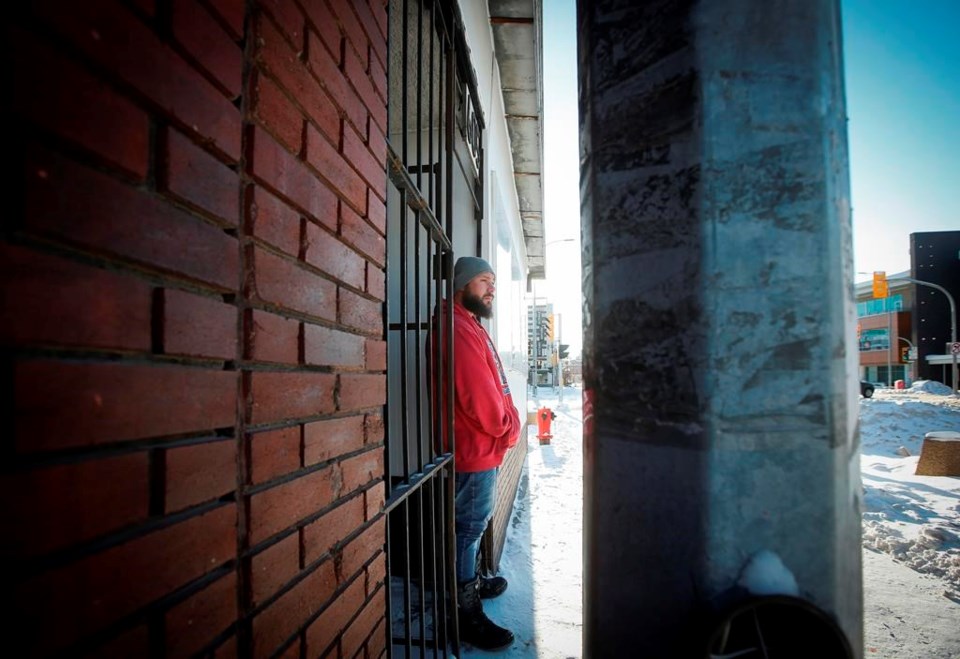WINNIPEG — Many youths have passed through the doors of 605 Main St., a one-storey building with a red brick facade that leaders of local grassroots organizations maintain.
Ashton Sinclair sits on one of the many well-used couches inside on a December afternoon and reflects on what led him there.
A year ago, the 14-year-old found himself questioning the path he was heading down. The Winnipeg teen watched as some of his friends got locked up and he feared he might be, too.
"All this stuff's going through your head: 'Maybe I shouldn't be in this situation right now because it's not healthy,'" Ashton recalled during an interview.
He thought about how his actions were affecting his reputation within the community and at school. Ashton decided to make a change.
He called a friend and asked for help.
"There's always a better way to live life. It's not always gang violence, money, drugs," he said. "I didn't want to be that person, so I took a better route."
Help came in the form of Matt Davidson, an advocate working to steer youth toward positive leadership.
"We show them consistency in a good way with love, care and respect," said Davidson.
Advocates say a combination of the COVID-19 pandemic decimating social services and a shortage of consistent and positive role models has forced young people to seek support from negative influences, resulting in a recent wave of violent crime involving youth.
A 15-year-old boy is alleged to have been part of a group that stabbed a Ukrainian newcomer and bear sprayed another at The Forks on Canada Day.
The following month, four people were assaulted during what police say was a spate of random violence. Marvin Felix, 54, and Danielle Ballantyne, 36, died from their injuries. Two 15-year-old boys are facing second-degree murder charges.
Four male youths have been charged in the death of a man who was stabbed at a downtown library on Dec. 11.
While non-violent crime involving youth remains historically low, these events point to an upward trend in violent youth crime.
Complete data for this year was unavailable, but statistics provided to The Canadian Press show that from September 2021 to August 2022, Winnipeg police found violent youth crime had increased by more than 40 per cent over the previous 12 months.
Overall youth crime remains low compared to the previous five years.
A scan of police releases up until mid-December found at least 12 youth are facing charges in connection to homicides.
These statistics line up with other parts of the country. Data from Statistics Canada suggest the rate of youth accused of violent crime in the country increased six per cent in 2021, while the rate of youth accused in other major categories of crime all decreased.
When the pandemic hit, social services moved online or were cancelled altogether in keeping with public health measures. Restrictions have eased, but some programs have failed to pick up to pre-pandemic levels.
Many youths accused in violent crimes this year are vulnerable teens who relied heavily on positive interventions outside the home, said Hillarie Tasche, a criminal defence lawyer with Legal Aid Manitoba.
"Social isolation has been a major factor for these kids," she said.
Tasche said for numbers to decline, there must be a reinvestment in activities, programs and mental health interventions for young people.
"If a young person spent their life suffering...that's a recipe for getting involved in the criminal justice system unless they're able to find a place for themselves in the wider community where they can choose a better path for themselves."
A spokesperson for Manitoba Justice pointed to funding allocated this year for safety programs, shelters, addiction programs and a youth healing lodge in the north to address safety concerns. In a statement, the spokesperson said the government would continue working with community leaders to divert youth away from violent crime.
Mitch Bourbonniere knows offering a safe space for youth can mean life or death. He has spent decades working with at-risk youth.
Gang or drug culture can provide an avenue for disenfranchised youth, he said.
"It's an outlet for them to gravitate towards, and that's really what the gangs depend on," Bourbonniere said. "It's easy to recruit kids who are lonely, isolated and looking for family. So, we've got to get to those kids before they do."
This means introducing kids to "positive activism" in the form of cultural practices, taking them out on the land or getting them involved in volunteer work.
Bourbonniere said it's important to recognize youth involved in violent crime represent a small portion of that population.
"I see triumph, success and I see young people turning their lives around every day," he said.
For Ashton, being part of something bigger than himself gives him the motivation to keep chasing positive influences.
"Instead of taking from the community, I give back to the community," he said.
"I love what I do."
This report by The Canadian Press was first published Dec. 31, 2022.
Brittany Hobson, The Canadian Press


